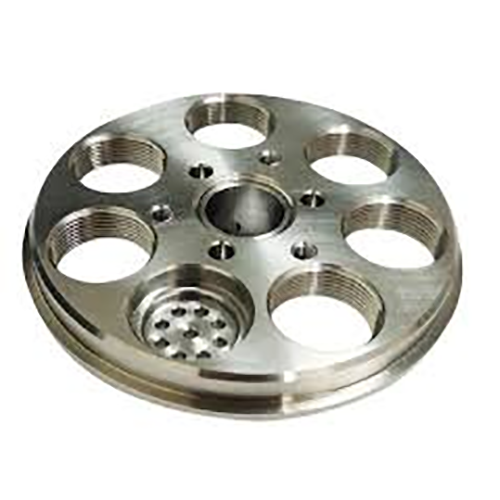
Attaining target exterior polish for a CNC part is of paramount importance.
- Engineering annotations specify detailed surface expectations for components
- Surface notes typically employ Ra—arithmetic mean deviation—when specifying roughness
- Understanding these callouts is fundamental for ensuring manufactured parts meet performance requirements
- Prescribed surface characteristics govern lubrication, abrasion, and longevity
- Right interpretation of surface notes ensures attainment of the sought condition
Understanding Precision Engineering in CNC Machining

CNC machining is a transformative approach within manufacturing using computerized programs to drive machines that cut complex shapes with high precision.
- CNC systems permit manufacture of precise components from diverse substrates
- Machine flexibility renders it suitable for medical device and electronics manufacturing
- G-code driven machining maintains reliable consistency across batches
Across R&D to production scale-up CNC machining drives manufacturing evolution
Deciphering CNC Machine Specifications
Parsing spec sheets may feel challenging at initial inspection
That said, foundational understanding plus a method lets you confront technical details
Initiate by spotting principal specs like spindle speed, feed rate, positional accuracy, travel limits, controller
All these parameters affect the tool’s total functional output.
By way of example raised spindle rpm benefits soft stocks while boosted feed enhances output.
Appreciating such links enables selection of equipment fit for your objectives
Ensure you peruse vendor documentation exhaustively.
Maker resources usually present informative direction and demystify jargon
CNC Machinery: An Exhaustive Guide
Programmed machining equipment comprises computer-managed tools for exact automated fabrication of diverse materials They operate by interpreting digital instructions called G-code to control cutting tools or other actuators.
- Various CNC platforms encompass milling centers, turning lathes, routers, plasma systems
- Fabrication techniques operate on ferrous, nonferrous, polymeric, and composite materials
- Additionally CNC gear supports fast prototyping and limited production for entrepreneurs and institutes
Understanding CNC Machinery
These tools showcase a blend of mechanical exactness and intelligent software command Versatile machinery employs programmed code to autonomously produce simple parts and complex assemblies The fundamental principle behind CNC machines is the translation of digital designs into physical forms.
- CNC machining
- Software control implementation
It entails finely timed actuator motions governed by software Production personnel configure feeds and speeds, monitor cycles, and guarantee output quality.
Why Surface Finish Matters in CNC Machining
Attaining target texture in CNC processes is critical It shapes both functional outcomes and outward appearance Stock properties, cutting settings, and finishing operations determine surface result.
High-quality surfaces strengthen durability while rough textures may reduce efficacy Code-driven machining enables selective tooling and techniques to attain required textures.
- Including selection of alternative tool profiles |coated inserts|RPM and feed adjustments to craft finish
- Additionally finishing processes including polishing and grinding refine texture
Seeing how process parameters map to surface output is key for optimal finishes.
Introduction to CNC Machining
This precise method uses computer-guided machinery to sculpt components from diverse substrates They apply digital directives to fabricate detailed geometries consistently Comprehending toolpaths, G-code, and tooling strategies supports effective machining
Industry applications include aircraft, automotive, medical, electronics, and beyond From precision engine parts to detailed injection molds, CNC delivers complex products
Callouts and Surface Roughness for CNC Parts
Right specification of finish is necessary for CNC-produced parts It makes sure the product satisfies function and aesthetic demands Surface finish callouts are typically represented using the system known as the Surface Roughness Ra Shown in micrometers or inches, the measurement denotes typical roughness magnitude.
Account for desired texture and the component’s purpose when selecting finish

In many cases fine finishes are necessary for accurate alignment and tight interfaces
Conversely a rougher surface finish could be appropriate for applications where grip friction traction is important
Leverage precise callout notation within drawings to indicate required finish Specify the Ra metric and note any secondary treatments or special machining steps.
Bear in mind accurate finish callouts drive better manufacturing results
Kinds of CNC Machines and Their Strengths
The world of CNC machining is vast and diverse with a wide array of machines designed to tackle various types of tasks These versatile tools utilize computer-aided design (CAD) software to control cutting tools enabling precise and efficient fabrication of components.
- Milling centers craft intricate contours cavities and surfaces by subtractive cutting
- Routers handle flat panel cutting and profiling for non-metal workpieces
- Plasma machines slice thick steel and ferrous metals rapidly using plasma arcs
Choosing the right CNC depends on production goals material type and required accuracy Unique machine capabilities support varied industry needs such as automotive, aerospace, and medical.
Realizing Superior Texture with CNC Machining
Realizing premium surface texture is vital and CNC machining supplies tools to accomplish it By adjusting feed, rpm, and cutter geometry skilled staff shape chip flow and surface formation for better finishes Furthermore the utilization of high-quality tooling materials and proper lubrication techniques contributes to a smoother finish Appropriate strategy choice combined with accurate setup produces excellent surface outcomes.
Achieving Surface Finish in CNC Programming
Skillful CNC programming directly impacts the final surface quality The chosen machining parameters including feed rate spindle speed and cutting tool geometry exert a significant influence on the final surface texture Exact parameter choices plus proper fluid management achieve refined finishes.
- In addition periodic tool servicing and checks secure consistent surface quality Additionally routine tool checks and upkeep maintain consistent finish quality Also ongoing tool care and inspection support sustained finish reliability
- To enhance finish consider workpiece material, roughness targets and use case
- Employing simulation software can help visualize and fine-tune cutting parameters before machining reducing the risk of surface defects
- Moreover scheduled tool maintenance and inspection preserve surface performance
